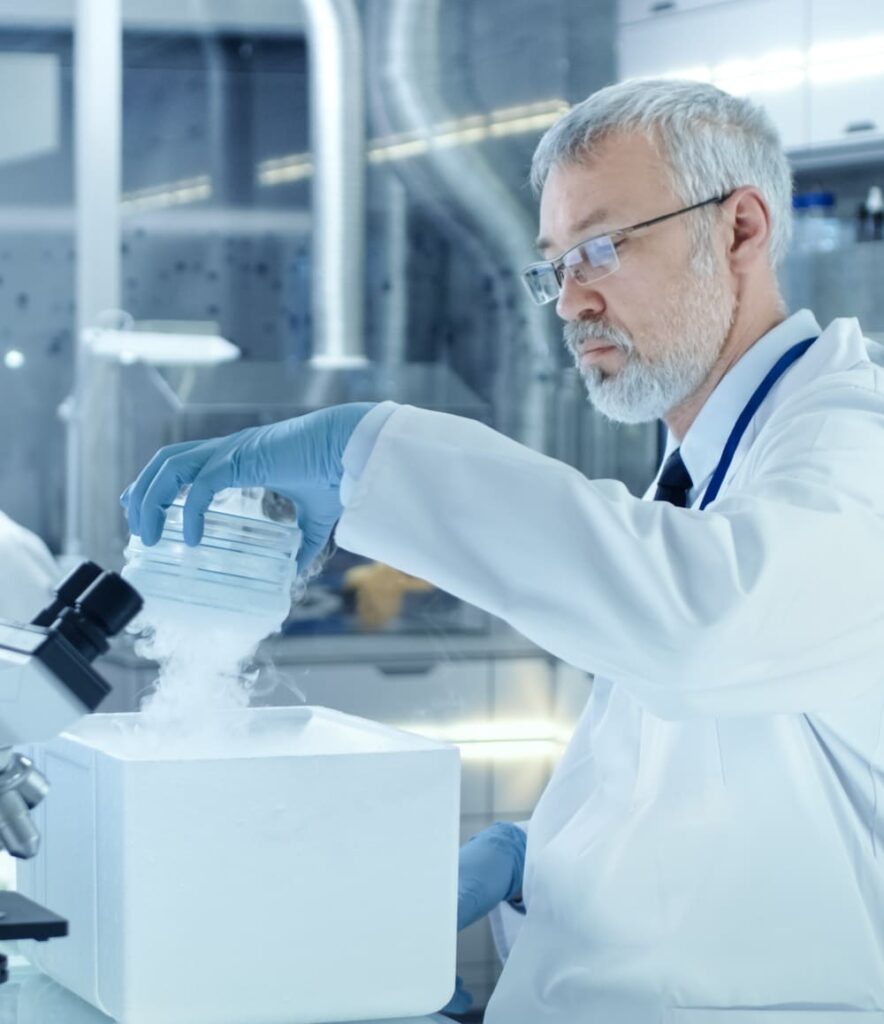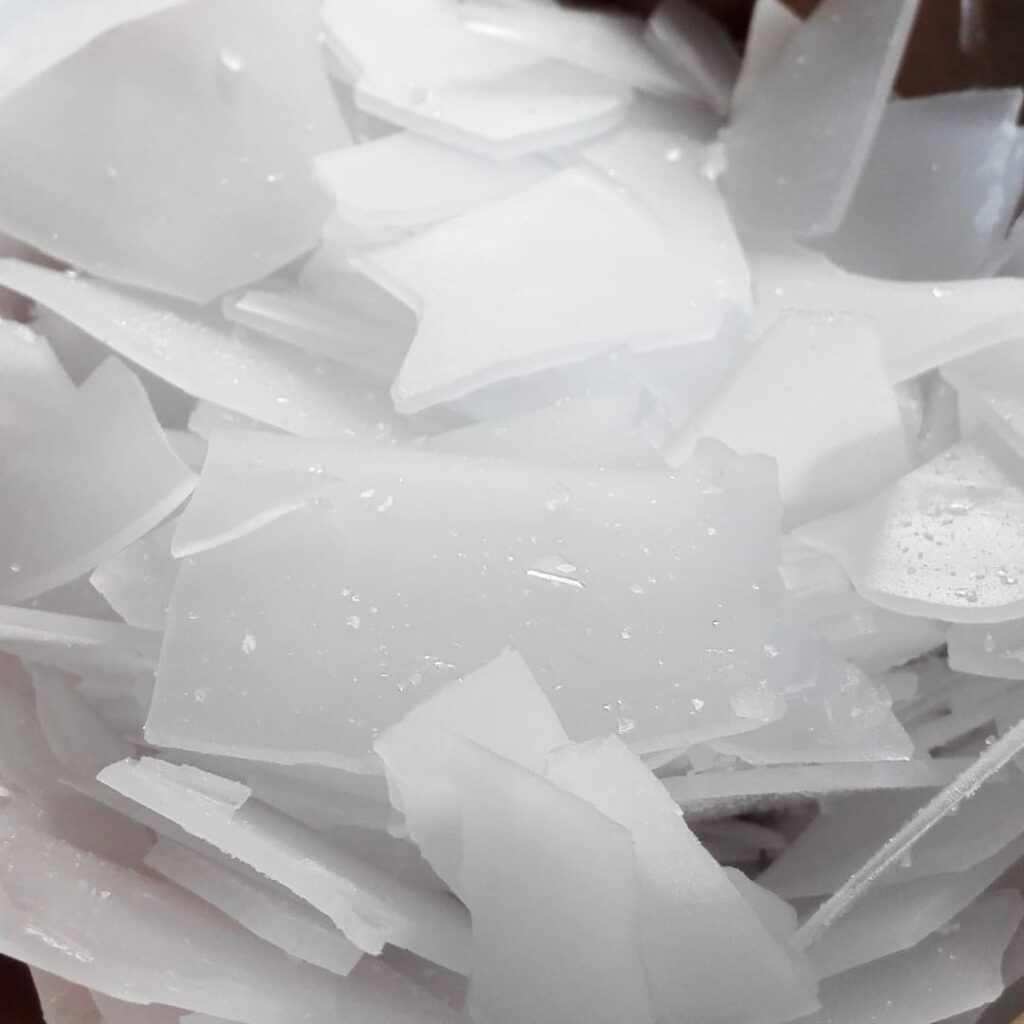The intricate nature of biopharmaceutical manufacturing necessitates the need for effective strategies to manage ice formation in order to preserve product integrity and safety. The process involves multiple stages that require precise temperature control, which can be compromised by unwanted ice formation.
As you delve into this blog post, you will gain insights into the importance of temperature control in drug development and production. We will discuss wet granulation and dry granulation techniques, as well as containment process equipment and transfer systems used to prevent contamination.
Moreover, we’ll explore essential safety precautions during organic synthesis reactions and highlight the significance of proper ventilation for maintaining a safe work environment. Additionally, we’ll introduce Salt® Ice Melters solutions specifically designed for industries like biopharmaceuticals.

Lastly, selecting the right ice melter is vital; hence we’ll guide you through factors influencing their choice while considering temperature thresholds for different products. Finally, environmental considerations when using ice melters are not overlooked; we’ll address proper disposal methods for leftover materials and protect pets from harmful effects.
Importance of Temperature Control in Biopharmaceutical Manufacturing
Precise temperature control is crucial in biopharmaceutical manufacturing to ensure product efficacy and safety. Maintaining optimal temperatures can be challenging, especially in cold environments where ice-melting solutions are necessary for seamless operations.
Role of Temperature Control in Drug Development and Production
In the world of drug development, every degree matters. From preserving the integrity of raw materials to ensuring proper reactions during synthesis, temperature plays a vital role at every stage. In fact, even slight deviations from ideal conditions can compromise product quality or lead to costly delays.
Challenges Faced by the Industry Due to Ice Formation
- Colder Temperatures: When freezing points drop below certain thresholds, traditional heating methods may not suffice – enter effective ice melters.
- Icy Equipment: Ice buildup on machinery can impede function and pose safety risks for workers.
- Frozen Raw Materials: Frozen ingredients don’t just slow down production; they also risk damaging sensitive components within complex formulations.
To overcome these challenges and maintain smooth operations amidst frigid climates, Hiceay’s industrial ice machines, along with reliable ice melt products offer an indispensable solution that keeps your facility running efficiently all year round.
Accurate drug development and production processes necessitate precise temperature regulation in biopharmaceutical manufacturing. By understanding wet and dry granulation techniques, manufacturers can further optimize their temperature control strategies for better results.
Wet Granulation and Dry Granulation Techniques
In the world of biopharmaceutical manufacturing, wet granulation and dry granulation techniques play a crucial role in reducing the average particle size in drug powders, increasing homogeneity, and maintaining compliance with good manufacturing practices. Let’s dive into these two fascinating processes that help keep our medicines safe and effective.
Overview of Wet Granulation Technique
The wet granulation technique, as the name suggests, involves adding liquid to raw materials to create agglomerates or “granules.” These moistened particles are then dried using various methods such as fluid bed drying or tray drying. This process is particularly useful for improving the flow properties of powdery substances while ensuring uniformity within the final product. However, it’s important to consider factors like colder temperatures, which can affect ice control during wet granulations.
Overview of Dry Granulation Technique
Moving on to its counterpart – the dry granulation technique. Unlike wet granulations that use liquids for binding purposes; this method relies solely on mechanical forces (such as compression) applied by equipment like roller compactors or tablet presses. The result? A blended product without any added moisture content. But beware: lower temperatures may still cause challenges when trying to melt ice formed during processing operations.
To ensure optimal performance within both wet and dry granulations alike – especially when dealing with freezing points – it’s essential for manufacturers to invest in high-quality ice machines from Hiceay. With premium flake ice machines and tube ice machines at your disposal, you can confidently tackle any temperature-related challenges head-on.

Wet and dry granulation techniques are essential tools for biopharmaceutical manufacturing, providing efficient ways to produce high-quality products. Containment process equipment and transfer systems can help ensure the safety of personnel as well as product quality during production.
Tips on How to Melt Ice in Biopharmaceutical Manufacturing
Ice melt products and ice melters are essential in biopharmaceutical manufacturing to prevent accidents and ensure worker safety. In colder temperatures, ice control is crucial to maintain the integrity of raw materials and blended products. Here are some tips on how to melt ice effectively:
- Choose the right ice melt product: There are different types of ice melters available, such as calcium chloride, magnesium chloride, and sodium chloride. Consider the freezing point of the area you are working in and choose the appropriate product.
- Apply the ice melt product correctly: Follow the instructions on the package carefully. Apply the ice melt product evenly and avoid over-application, as it can damage surfaces and harm the environment.
- Use ice melt products with corrosion inhibitors: Some ice melters can damage equipment and surfaces. Look for products that contain corrosion inhibitors to protect your equipment and infrastructure.
- Prevent refreezing: After applying the ice melt product, remove the slush and excess water to prevent refreezing. Use sand or other abrasives to improve traction on slippery surfaces.
By following these tips, you can effectively melt ice in biopharmaceutical manufacturing and ensure a safe and productive workplace.
Containment Process Equipment & Transfer Systems
In the fascinating world of biopharmaceutical manufacturing, it’s crucial to minimize exposure risks for workers handling hazardous chemicals during compounding operations. That’s where containment process equipment and transfer systems come into play. These nifty measures protect worker health while ensuring adherence to regulatory requirements.
Types of Containment Process Equipment
- Gloveboxes: Enclosed spaces with built-in gloves that allow operators to handle materials without direct contact.
- Fume Hoods: Ventilated enclosures designed to capture and remove airborne contaminants generated during chemical processes.
- Safety Cabinets: Storage units engineered specifically for the safe containment of flammable, corrosive, or toxic substances.
Benefits of Using Transfer Systems
Apart from making your workplace safer (which is already a pretty big deal), there are other perks associated with using transfer systems in biopharmaceutical manufacturing. Let us enlighten you on some key benefits:
- Better Product Quality Control: No more worrying about cross-contamination between raw materials and blended products.
- Ease-of-use: User-friendly designs make transferring hazardous substances as smooth as the ice melts at lower temperatures (pun intended).
- Cost-effectiveness: Investing in these safety solutions can save companies money by reducing potential accidents, injuries, and costly cleanups. Plus, they help maintain compliance with ever-evolving regulations. Talk about a win-win situation.
Containment process equipment and transfer systems are essential components for ensuring the safety of organic synthesis reactions in biopharmaceutical manufacturing. To guarantee a secure workplace, it is imperative to comprehend the essential security safeguards that must be taken when managing synthetic compounds during these cycles.
Safety Precautions During Organic Synthesis Reactions
Working with chemicals in biopharmaceutical manufacturing requires a high level of safety awareness. When it comes to organic synthesis reactions, there are significant process safety risks that must be addressed. In this section, we’ll discuss essential safety measures and ventilation requirements for maintaining a safe work environment.
Essential Safety Measures for Chemical Handling
- Eyewashes and Safety Showers: These should be readily available throughout the facility in case of accidental chemical exposure. Check OSHA for proper setup and upkeep of these safety measures.
- Gloves: Workers handling hazardous materials should wear appropriate gloves to protect their hands from potential harm. Learn more about selecting the right type of glove by visiting this helpful guide provided by NIOSH.
- PPE: Personal protective equipment such as goggles, face shields, aprons or lab coats can minimize contact with dangerous substances during ice control procedures involving colder temperatures or raw materials like blended products.
Ventilation Requirements for Maintaining a Safe Work Environment
In addition to personal protection measures, proper ventilation is crucial when working with chemicals that produce fumes or vapors during ice melt processes at lower temperatures. Here are some tips on ensuring adequate air circulation within your facility:
- Maintain sufficient exhaust systems near areas where volatile compounds may be released into the air.
- Consider using local exhaust ventilation (LEV) systems to capture and remove contaminants at the source, as recommended by OSHA.
- Regularly inspect and maintain your facility’s HVAC system to ensure optimal performance and prevent the buildup of hazardous substances in the air.
It is imperative to take all necessary precautions when performing organic synthesis reactions in order to guarantee the security of personnel and apparatus. By utilizing a salt ice melter solution, biopharmaceutical manufacturing processes can be safely and effectively completed without compromising on quality or performance.
Salt® Ice Melter Solutions for Industries
When it comes to battling ice in biopharmaceutical manufacturing, one size does not fit all. That’s why Hiceay, the leading manufacturer of premium quality ice machines, offers a range of Salt® ice melters specifically designed for industries. These products take into account factors such as indoor temperatures when determining their effectiveness.
Safe-T-Salt Plus – Non-toxic blend offering less corrosiveness than traditional options
One standout product Safe-T-Salt Plus. This non-toxic blend boasts reduced corrosiveness compared to traditional rock salt-based options while still providing excellent performance at lower temperatures. It’s perfect for facilities that need an effective solution without compromising on safety or causing damage to equipment and surfaces.
- Eco-friendly: Unlike some other ice melts on the market, Safe-T-Salt Plus is made with environmentally friendly ingredients that won’t harm plants or wildlife.
- Pet-safe: We know your furry friends are important too. This formula has been developed with pet safety in mind so you can rest easy knowing they’re protected from potential hazards associated with other types of ice control products.
- Versatile application: Whether you’re dealing with freezing point challenges inside a facility or colder temperatures outdoors during loading/unloading processes, this blended product will help keep operations running smoothly no matter what Mother Nature throws your way.
To learn more about how Hiceay’s Salt® line can help improve efficiency and maintain optimal conditions within your biopharmaceutical manufacturing facility, contact us today.
Salt® Ice Melters Solutions For Industries provide a reliable and safe solution for industries to melt ice quickly, without compromising on safety or quality. Choosing the right ice melter necessitates taking into consideration various factors, including temperature thresholds for distinct products.
Selecting the Right Ice Melter for Biopharmaceutical Manufacturing
Choosing an appropriate ice melter for your biopharmaceutical manufacturing facility is crucial to ensure smooth operations and maintain optimal temperatures. When selecting an ice melter for your biopharmaceutical manufacturing facility, take into account variables such as the indoor temperature, materials used in the space, and environmental considerations.
Factors Influencing the Choice of Ice Melters
- Temperature: Different ice melt products work effectively at different temperature ranges. For instance, regular rock salt may suffice at 15°F or warmer but would struggle in colder temperatures.
- Type of Raw Materials: Some facilities might require a blended product that can handle lower temperatures without damaging sensitive equipment or compromising safety standards.
- Eco-friendliness: Opt for environmentally friendly options if possible to minimize harm to plants and animals surrounding your facility.
Temperature Thresholds for Different Types of Ice Melting Products
To help you make an informed decision about which type of ice melter will best suit your needs, consider these common options along with their effective temperature ranges:
- Sodium Chloride (Rock Salt): Effective down to approximately 20°F (-7°C).
- Magnesium Chloride: Effective down to approximately -13°F (-25°C).
When selecting the right ice melter for biopharmaceutical manufacturing, it is important to consider factors such as temperature thresholds and environmental considerations. Therefore, proper disposal methods of leftover materials and protecting pets from harmful effects should be taken into account when using an ice melter.
Environmental Considerations When Using Ice Melters
While ice melters are essential for maintaining safe and efficient operations in biopharmaceutical manufacturing, it’s crucial to consider their environmental impact. Excessive salt can harm plants and pose risks to pets who come into contact with treated surfaces. To mitigate these issues, proper disposal methods should be followed once the ice has melted.
Proper Disposal Methods for Leftover Materials
To minimize potential harm to the environment, always dispose of leftover ice melt products according to local regulations. This may include sweeping up excess material from walkways or driveways and disposing of it in designated waste containers. By doing so, you’ll prevent runoff that could contaminate nearby water sources or damage plant life.
Protecting Pets from Harmful Effects
- Rinse trays: Lead your furry friends through a rinse tray after exposure to outdoor areas where ice melters have been applied. This simple step will help remove any residue from their paws and reduce the risk of ingestion or skin irritation.
- Pet-friendly options: Opt for pet-safe ice melts like Safe-T-Salt Plus when possible – this non-toxic blend offers less corrosiveness than traditional options while still providing effective melting at colder temperatures (source).
- Awareness: Educate yourself on the signs of salt poisoning in pets (such as vomiting, diarrhea, and lethargy) so you can take immediate action if needed.
By taking these precautions, you can ensure that your ice control efforts in biopharmaceutical manufacturing facilities remain environmentally responsible and safe for all living beings.
FAQs in Relation to Tips on How to Melt Ice in Biopharmaceutical Manufacturing
What is the most effective way to use ice melt?
The most effective way to use ice melt is by applying it evenly and sparingly before snow or ice accumulates. Use a handheld spreader for even distribution, and follow the manufacturer’s recommended application rate. Remove slush and excess product after melting occurs to prevent refreezing.
What are some ice-melting techniques?
Some common ice melting techniques include using salt-based products like sodium chloride, calcium chloride, or magnesium chloride blends; applying heat through radiant heating systems or hot water; employing mechanical methods such as scraping with shovels or plows; and utilizing environmentally friendly alternatives like urea-based products.
What makes ice melt faster?
Ice melts faster when exposed to substances that lower its freezing point or increase thermal conductivity (e.g., sand). Other factors affecting the speed of melting include ambient temperature, sunlight exposure, wind conditions, surface type, and insulation properties of surrounding materials.
How do you melt the ice with chemicals?
To melt the ice with chemicals, apply an appropriate deicing agent such as calcium chloride, magnesium chloride, or sodium acetate on the icy surface. These compounds work by lowering the freezing point of water so that it can remain in liquid form at colder temperatures than normal. Always follow safety guidelines when handling these chemicals.
Conclusion
From wet granulation to dry granulation techniques, compliance with good manufacturing practices, and navigating complexities unique to biopharmaceutical manufacturing, there are many challenges that must be addressed.
Fortunately, Salt’s innovative ice melters offer non-toxic and less corrosive options, making them an excellent choice for facilities in need of effective ice-melting solutions. Selecting the right ice melter for your facility depends on factors such as sodium chloride blends or calcium chloride/magnesium chloride blends.
If you’re looking for tips on how to melt ice in biopharmaceutical manufacturing while maintaining environmental considerations and upholding the highest standards of excellence at every stage of operation, contact Project today. Our team can help you navigate these complexities with ease so that you can focus on what matters most – delivering safe and effective products.


